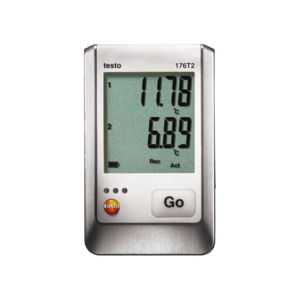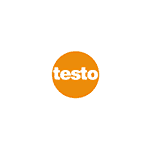
- Description
- Specifications
- Documents
- Two external RTD sensor connections for highly accurate data logging
- Requires a sensor to be connected to start up
- Large easy to read backlit display
- Capable of storing up to 2,000,000 temperature readings
- Rugged and waterproof according to IP65
- Data transfer possible using the USB port, or SD card (optional)
- IP65 protection class
- Capable of CFR 21 Part 11 Compliancy
- Free data logger software available for download
- Data is secured within the logger, and can be password protected using ComSoft
The Testo 176T2 temperature data logger features a large display that makes it ideal for monitoring of temperatures in the food sector and laboratories. The temperature measurement logger has connections for RTD sensors for highly accurate data logging, giving it the highest accuracy available. Creation of Excel Spreadsheets, PDFs, and data analysis are all easily achieved with the free, downloadable ComSoft software.
Monitoring and documentation of the temperature in cold rooms
Many foods and drugs have to be stored within a specific cold temperature range. This can be done in inpidual cooled store rooms, but also in specialized cold stores or cold warehouses with high-rack facilities. The temperature must be continuously documented in all these cold storage facilities, because strict rules apply to quality management in both the food and drugs industries.
Data loggers are usually installed at the so-called critical control points (CCPs) of the cold room, in order to identify any possible temperature deviations and to introduce appropriate countermeasures. Critical points are for instance doors or passages through to other temperature areas within a warehouse.
Monitoring and documentation of transport temperature
For all goods which react sensitively to temperature fluctuations or have to be stored within a predefined temperature range, uninterrupted measurement data recording and documentation play a major role.
Incorrect temperature conditions during transport can lead to major losses of quality, including the total loss of value of the products that require monitoring. Using a data logger, shipments can be checked for compliance with the specified temperature ranges and the data can then be read, analysed and archived by means of special software.
